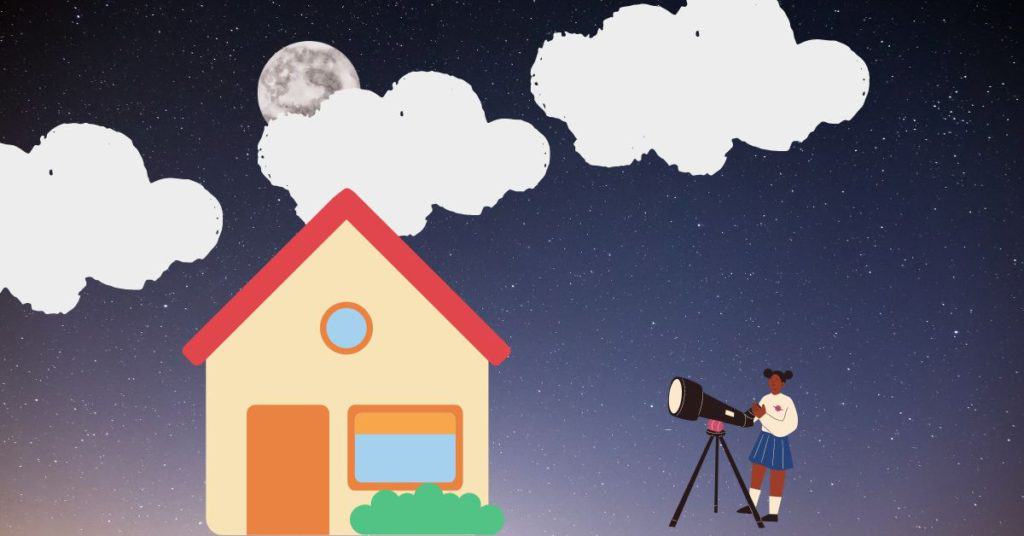A moon is a fascinating object that leaves many of us with questions that can not always be answered. NASA is continuously carrying out lunar discovery missions to find the unanswered questions. One question and one I will answer here is why you can’t see the moon every night stumps us when the phase runs for 29.5 days.
In theory, the moon should be able to be seen every day from the earth. However, when the moon is its new moon phase of the 29.5 days phase cycle. From our perspective on earth, this is only a thin sliver of the moon that would be visible. Often this is why we mistakenly believe the moon is not in the sky. When in fact, it is we just can’t see it as it’s only a small sliver of the moon.
Okay, so we know that the moon is in the sky every day; it is just much harder to spot in its new moon phase. A telescope to see the moon will allow you to see the moon much easier in the new moon phase if you own one.
Other factors will stop us from seeing the moon in the night sky also.
Phases Affect Our View of the Moon

The moon has eight different phases, and we have coved them all in our moon phases article. But the moon phases have a significant impact on how well we can see the moon in the night sky.
There is only a thin sliver of the moon in the sky during a new moon phase 0-2 days of the moon cycle’s 29.5 days. Also, at the end of the 29.5 days moon cycle waning crescent 28-29.5, we again have only a thin sliver of the moon visible.
With only this thin sliver in the sky, it is hard to see in the night sky, and people often can’t see it with the naked eye. Usually, to get a view of a new moon or the end of the waning crescent, you will need a telescope to assist your viewing.
Time Affect Our View of the Moon
The moon phases also are affected by the time of day. There are times within a moons cycle, and in certain circumstances, it falls within daylight hours when the moon is in our sky.
With circumstances like the sun’s position and were in the sky, the moon is you still may be able to view the moon during the day.
Weather Affect Our View of the Moon

The most significant effect on our view of the moon is the weather; if you have a telescope, you will know how frustrating the weather can be and its impact on our view of the night sky.
On a cloudy night, you will be unable to see the moon as the clouds will block out your view. However, you will be able to see evidence of the moon in the sky. You should be able to see a glow in the sky like someone is lighting up the clouds.
During the day, if the moon is in the sky and it is a cloudy day, you will have no chance of seeing the moon. You will also have no evidence of the moon in the sky during the day, as the sun will wash out any visible signs.
Objects Affect Our View of the Moon

During the phases, the moon travels through the sky and will only reach just above the horizon or very low in the sky during the night.
However, depending on your position to the horizon and what objects you have in your way, your view of the moon can be significantly affected. If the moon is low on the horizon, then your house could be blocking out your view of the moon.
We will only ever see one side of the moon.
The moon revolves around the earth and with the moon rotating on its axis. With these two processes happening, we never see the other side of the moon, also known as the dark side of the moon.
So, despite the fact we can always see the moon in the night sky, if conditions are in our favor, we never see the moon’s dark side.
Conclusion
So we have discovered why you can’t see the moon every night and some of the main things that stop us from seeing the moon.
If the condition is correct, like a clear sky, but you can’t see the moon, you may need a telescope to pinpoint a new moon. If your moon is low on the horizon, you will need to move to get a clearer view and out of the way of obstacles.
The moon is a celestial body I love to observe so much, so I have compiled a complete lunar 100 guide. If you are looking to spice up your telescope hobbies, then the lunar 100 is a challenge to find 100 features on the moon.



